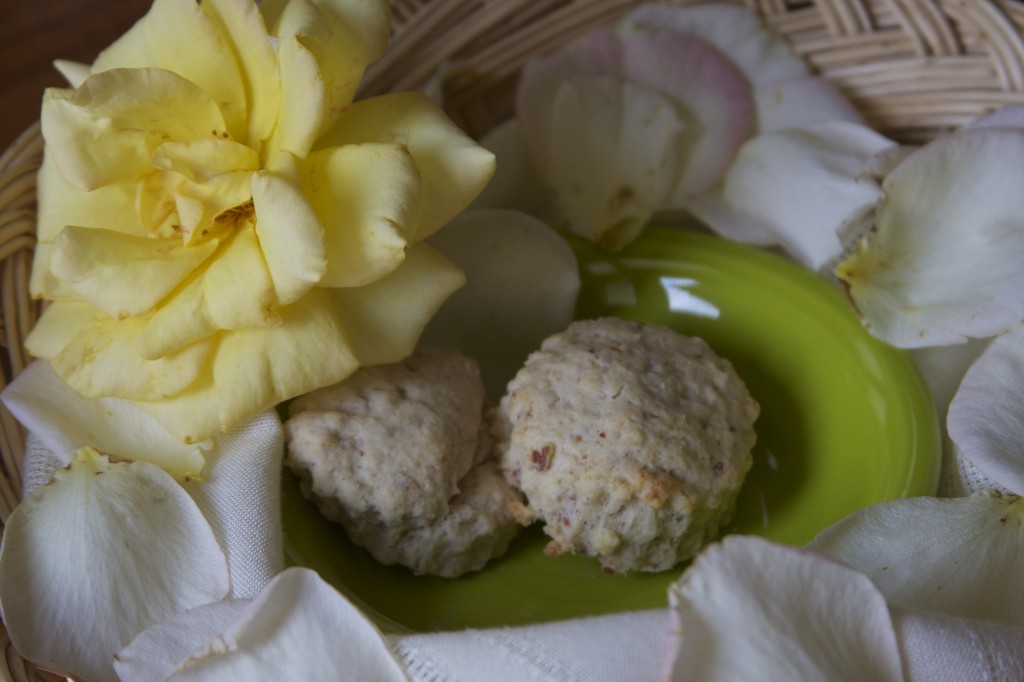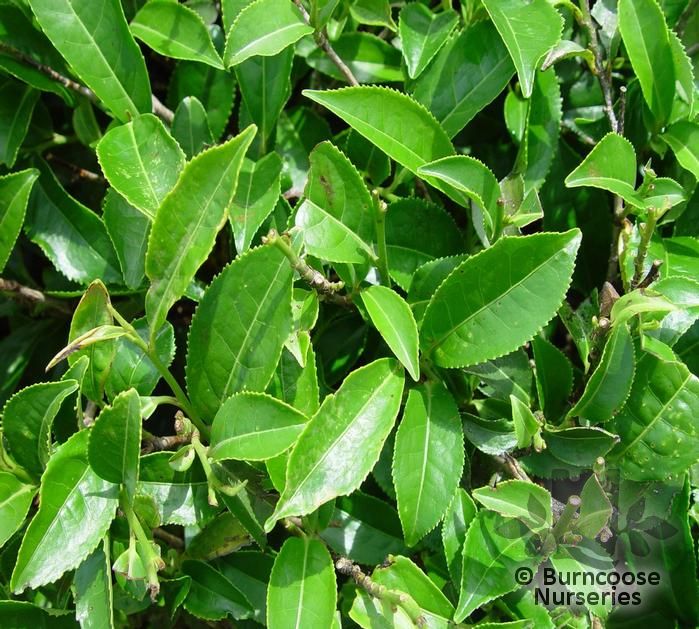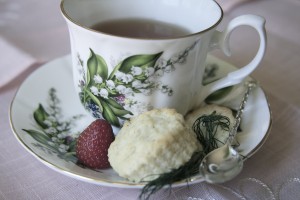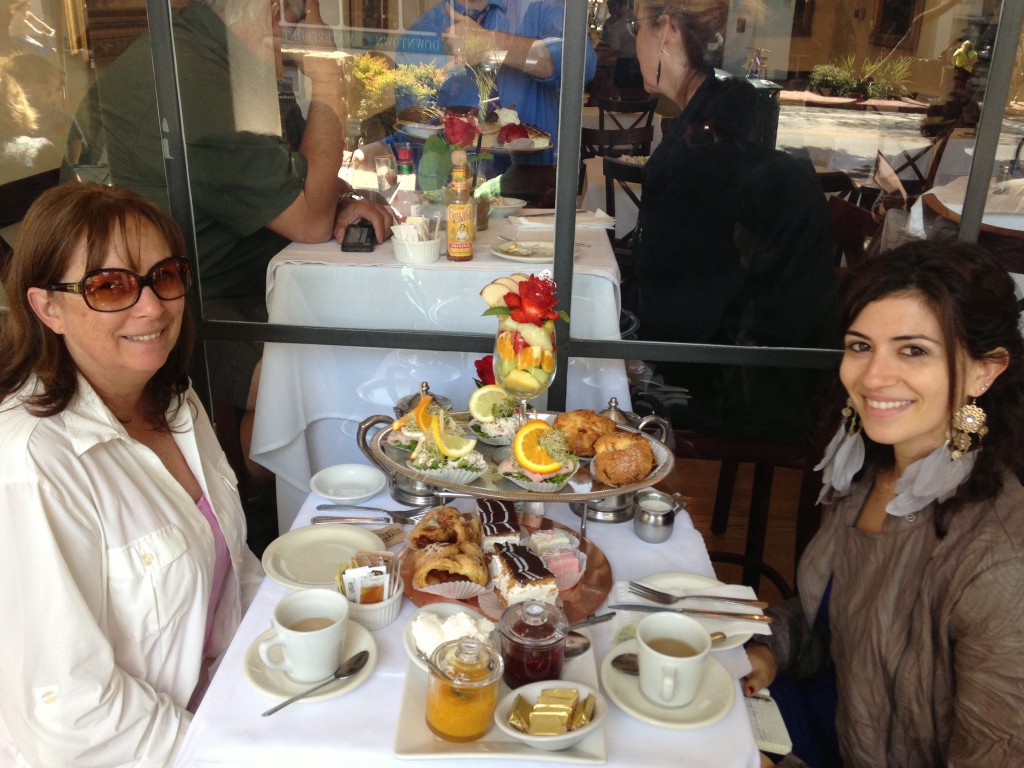Why name these scones “Almond Bliss”? Because almond and scone is such a delicious and delicate combination that it inspires utter bliss when eaten warm out of the oven, topped with true clotted cream. A dollop of spring strawberry jam may be traditional and adds a sweet treat to this scone, but it is far from necessary. Fun, exotic, unique, and complex flavor blends all have their place, but with these almond scones the pleasure is in the simplicity.
I considered starting off Scone Sundays (I kind of have a thing for alliterations: Tea Room Review Tuesday, Fun Fact Friday) with my current go-to cream scone recipe. Plain, versatile, well-honed, and classic. Cream scones are the most traditional type of scone alongside sultana. But why do we always have to start with the basics? Dare to be different! Make these almond scones; a cream scone recipe will always be there in the event of recipe tragedy, but I promise you won’t need it.
Almond Bliss Scones
Recipe adapted/edited from Scones by Genevieve Knights
Ingredients
- 200 g plain flour
- 2 teaspoons baking powder
- 1/4 teaspoon salt
- 50 g soft brown sugar
- 70 g ground almonds
- 200 mL double cream (heavy whipping cream)
- teeny bit of water





